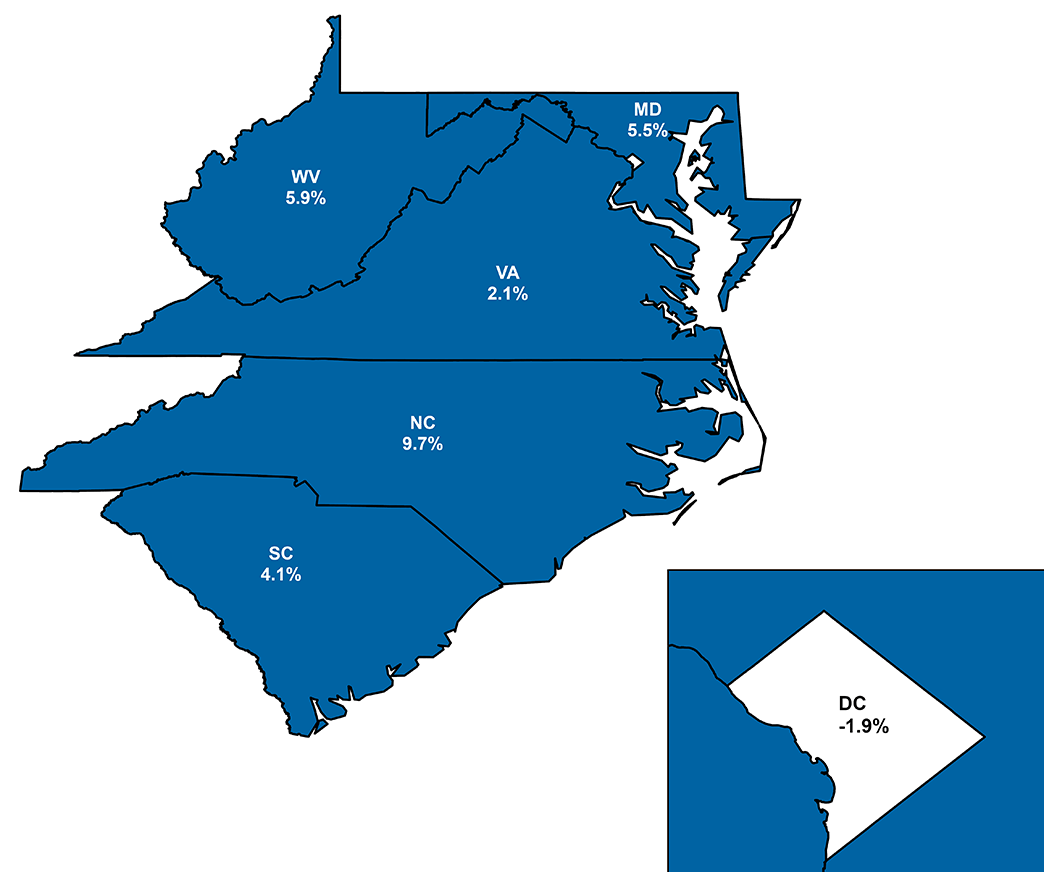Wraparound services like transportation assistance and child care foster student success. This post highlights how some community colleges are supporting student parents.
Fall 2024 College Enrollment: New Data Tell a Different Story
In October 2024, I wrote a piece summarizing the National Student Clearinghouse Research Center's (NSCRC) preliminary data on fall 2024 college enrollment through their Stay Informed report series. These estimates are based on unadjusted preliminary data from a limited subset of institutions but are often reliable indicators of the final enrollment estimates released annually in January. As I wrote in October, the data published by NSCRC indicated that, while overall college enrollment was up slightly from fall 2023, freshman enrollment declined by 5 percent. This would have been the largest decline since fall 2020, but it was not entirely unexpected. On Jan. 13, the NSCRC reported that they had discovered a significant "methodological error" that led to an undercounting of the number of freshmen in the Stay Informed release. Essentially, they mislabeled some freshman as dually enrolled high school students, undercounting freshmen and overcounting dual enrollment. On Jan. 23, the NSCRC released the official Current Term Enrollment Estimates (CTEE) with enrollment data covering 97 percent of college enrollments at the vast majority of colleges and universities across the country. With these new data in hand, this article serves as an update and correction of my post in October, using the new, expanded fall 2024 enrollments published by NSCRC on Jan. 23.
Overall, College Enrollment Increased, but Not Everywhere
The CTEE data show an overall increase in total undergraduate college enrollment of 4.5 percent nationwide compared to fall 2023. North Carolina saw the largest increase in the Fifth District, increasing 9.7 percent. New estimates show that enrollment in West Virginia climbed by 5.9 percent in fall 2024, exceeding the national average and coming in second amongst Fifth District geographies. Maryland also had growth above the national average at 5.5 percent.
South Carolina and Virginia saw growth — but at levels that lagged the national average — at 4.1 percent and 2.1 percent, respectively. Estimates for Washington, D.C., show a decline of 1.9 percent.
In addition to geographic variation, the data also show differences in undergraduate college enrollment growth across different types of institutions. Expanded estimates show that private, for-profit four-year institutions saw the strongest levels of growth, at 7.5 percent. Fall 2024 enrollment growth was also quite strong at public two-year institutions and primarily associate degree granting baccalaureate (PAB) institutions, with enrollment increasing 5.8 percent and 6.3 percent, respectively. The other sectors were below the sector average: Enrollment at public four-year institutions increased 3.1 percent, while enrollment at private, nonprofit four-year institutions grew 3.8 percent.
Despite FAFSA Challenges, Freshman Enrollment Grew
After months and months of concern regarding the myriad of issues with the Free Application for Federal Student Aid (FAFSA), the previous estimates of a 5 percent decline aligned with the expectations of many, including our own. Instead, new NSCRC estimates indicate that overall freshmen enrollment grew 5.5 percent in fall 2024. Growth was especially strong amongst older freshman, with enrollment of those ages 21 to 24 growing 16.7 percent, and those ages 25 and older growing 19.7 percent. Freshman enrollment growth for younger students was more muted, with enrollment of 18-year-old students increasing 3.4 percent and 19- and 20-year-old freshman enrollment increasing 4.5 percent compared to fall 2023.
It is important to point out that freshman enrollment growth amongst students ages 24 and older was extraordinarily strong at for-profit four-year institutions this fall, increasing 49.3 percent. While this age group also saw strong increases in other sectors, the growth pales in comparison to the growth at for-profit colleges and universities.
The NSCRC released some very interesting data with the expanded estimates, showing the growth in enrollment of first-time 18-year-olds originating from each state alongside FAFSA completion declines amongst high school graduates in 2024. West Virginia, which saw the largest FAFSA completion decline (15.2 percent) in the country, had the second largest decline (3.3 percent) in the enrollment of 18-year-olds originating from a state. All other Fifth District geographies saw declines in FAFSA completions amongst high school graduates but an increase in the percentage of 18-year-olds that went to college.
Closing Thoughts
The corrections made by NSCRC tell a much different story than the one we published in October; one that is more positive for much of the spectrum of higher education institutions. These remain estimates, so while the data are considerably expanded, they should not be interpreted as final. The increase in overall freshman enrollment suggests that many students did not let the FAFSA challenges derail their college-going plans. In some cases, delayed financial aid packages may have compelled students and their families to make difficult choices with limited information. As a result, we will be closely watching retention and transfer trends for the Fall 2024 incoming freshman class. On the bright side, next year's freshman should not face this barrier: the 2025-2026 FAFSA was released ahead of schedule.
Views expressed are those of the author(s) and do not necessarily reflect those of the Federal Reserve Bank of Richmond or the Federal Reserve System.
Receive an email notification when a new Community College Insights article posts:
Related Content
Community colleges can leverage a number of creative strategies and partnerships to provide long-term housing solutions for the unique student populations they serve.




